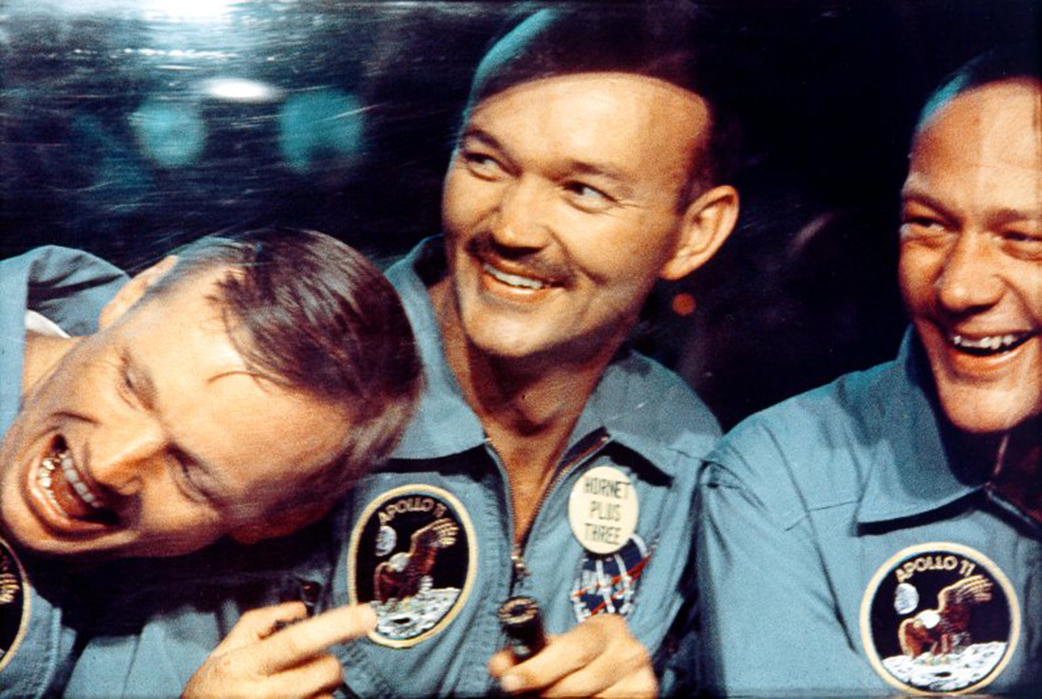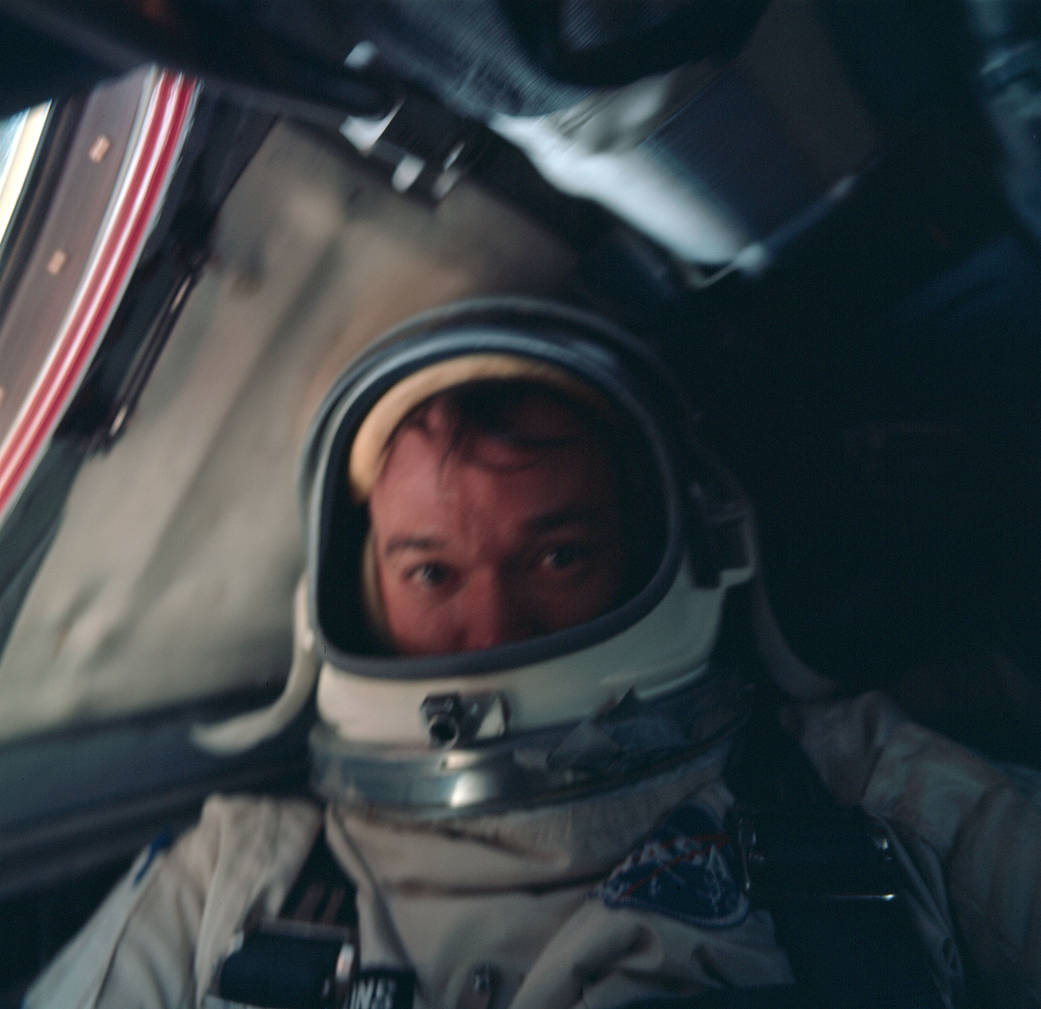Alone at the Moon: What Was Michael Collins Thinking During the Apollo 11 Lunar Landing?
Michael Collins wasn't really the "loneliest person in the world," and he recently revealed what he was actually thinking in the Apollo 11 command module.
Michael Collins, the Apollo 11 astronaut who piloted the command and service module while Neil Armstrong and Buzz Aldrin walked on the lunar surface, was dubbed the "loneliest person in the world" upon returning to Earth.
But Collins has since dismissed this description of his time in the spacecraft and recently revealed one of his major preoccupations during his solo orbits: how a colony of white mice was faring back on Earth.
Collins, who was sometimes overshadowed by his colleagues like George Harrison of the Beatles, was alone in the spacecraft, orbiting the moon, while his colleagues landed and explored on the surface down below. He was also entirely out of communication with NASA Mission Control for more than 45 minutes at a time as he orbited around the far side of the moon.
Related: Apollo 11 at 50: A Complete Guide to the Historic Moon Landing
- Relive the Apollo 11 Moon Landing Mission in Real Time
- How the Apollo 11 Moon Landing Worked (Infographic)
- Apollo 11 Moon Landing Giveaway with Simulation Curriculum & Celestron!
But despite the total silence, Collins wasn't lonely as he looked down at the lunar surface and thought of his colleagues.
"I was not lonely," Collins said at an Explorer's Club event in New York City earlier this year, "I had a happy little home in the command module. Behind the moon it was very peaceful — no one in Mission Control is yakkin' at me and wanting me to do this, that, and the other. So I was very happy, it was a happy home."

Collins told his orbiting-the-moon story on stage at the event, alongside Apollo astronauts Buzz Aldrin, Rusty Schweickart, Charlie Duke, Walt Cunningham and Al Worden, who all discussed the Apollo program, along with private spaceflight participant Richard Garriott.
Get the Space.com Newsletter
Breaking space news, the latest updates on rocket launches, skywatching events and more!
Collins did reveal, however, that his solo orbit around the moon wasn't all peace and tranquility. While he reviewed possible rendezvous maneuvers with the lunar module on the surface of the moon, Collins worried about his friends — a bunch of tiny, white mice.

"I was amazed, because the emphasis in the press was 'wasn't I the loneliest person in the whole lonely world in the whole lonely orbit around some lonely thing' and, you know, what I was worried about was the white mice," Collins said.
Upon returning from the moon, the Apollo 11 astronauts spent a couple of weeks in quarantine alongside a colony of white mice. The idea was that if the mice fell ill or started exhibiting strange behaviors, the team monitoring the crewmembers would know that perhaps they had brought "moon germs" back with them.
"If one of those poor little things didn't do too well, we were in deep trouble, we might've brought back some pathogen. So every time I was asked, 'weren't you the most lonely one?' I think, 'Oh God, those poor little white mice, I hope they're doing alright,'" Collins said.
So, it turns out that the post-landing media coverage had Michael Collins all wrong. He wasn't lonely, he was taking a break from Mission Control and daydreaming about a colony of mice.
- The Apollo Moon Landings: How They Worked (Infographic)
- How the Apollo 11 Moon Landing Worked (Infographic)
- Apollo 11 Moon Rocket's F-1 Engines Explained (Infographic)
Follow Chelsea Gohd on Twitter @chelsea_gohd. Follow us on Twitter @Spacedotcom and on Facebook.
Join our Space Forums to keep talking space on the latest missions, night sky and more! And if you have a news tip, correction or comment, let us know at: community@space.com.

Chelsea “Foxanne” Gohd joined Space.com in 2018 and is now a Senior Writer, writing about everything from climate change to planetary science and human spaceflight in both articles and on-camera in videos. With a degree in Public Health and biological sciences, Chelsea has written and worked for institutions including the American Museum of Natural History, Scientific American, Discover Magazine Blog, Astronomy Magazine and Live Science. When not writing, editing or filming something space-y, Chelsea "Foxanne" Gohd is writing music and performing as Foxanne, even launching a song to space in 2021 with Inspiration4. You can follow her on Twitter @chelsea_gohd and @foxannemusic.









